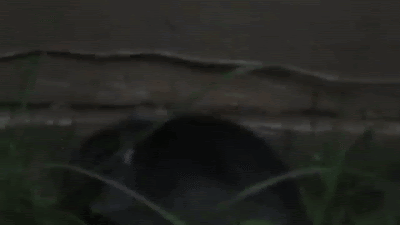This didn't need to happen, oh no, not on an Easter Sunday morning when all you hope for is a cheery visit from a fluffy little bunny handing out candy eggs.
What I got was a rat.
I have never SEEN a rat before. I have had nothing to DO with a rat, ever. But there it was, hunched on top of my bird feeder, its snakelike tail drooping down, looking more dead than alive except for its skritchy little whiskers and trembling little nose.
I didn't want to think about an entire colony of rats living in the tool shed. So I told myself, over and over and over again, that there HAD to be just this one rat, this lethargic-looking thing that we could easily poison or snare in a trap, or, at very least, scare away.
Bentley was coping admirably. Though he was obviously traumatized, he dealt with the enormous stress in his usual courageous manner, by flopping over on his side and yawning. Bentley laughs at death.
The thought of an infestation in my house or even in my tool shed makes me want to move out. This was a HORRIBLE creature, but it got worse, because later in the day while we were having a lovely, jolly barbecue in the back yard, this happened:
This. . . this THING came skulking beside the back fence and began skittering along at a dreadful pace. My God - it was either the same rat, meaning that the rat would keep returning indefinitely, or. . .
It was a different rat.
"Maybe it's pregnant," my daughter-in-law said to me. OMG. Can't be happening. The grandgirls were screeching and whooping and wanting to adopt it, insisting it was "cute".
This is the same creature who brought Europe to its knees during the medieval plagues. NOT cute.
As a family, we will survive. We've surmounted many a disaster up to now. That absolutely does NOT mean we'll surmount this one. In fact, by the law of averages, our survival is about to collapse like a house of cards.
Oh God, I cannot look at this gif much longer or I will become ill. And yet, I cannot let it go. The hellish sight of vile scampering vermin will be with me forever.
























